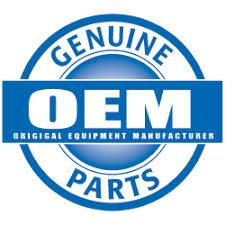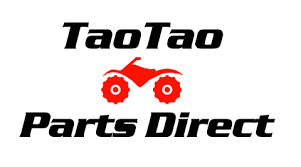
Should I Use Amazon Knockoff's Parts or OEM Parts?
Share
Should I Use Amazon Knockoff's Parts or OEM Parts?
When it comes to maintaining and repairing machines, one common dilemma that many people face is whether to use Amazon knockoff parts or OEM (Original Equipment Manufacturer) parts. With the rise of online marketplaces like Amazon, it has become easier than ever to find alternative parts that claim to be comparable to the original ones. However, it is important to consider the potential risks and drawbacks before making a decision.
What are Knockoff Parts?
Knockoff parts, also known as aftermarket or generic parts, are manufactured by third-party companies and are designed to replicate the original parts of a machine. These parts are often cheaper than OEM parts and are easily accessible through online platforms like Amazon. While they may seem like a cost-effective solution, using knockoff parts can lead to a host of problems.
The Risks of Using Knockoff Parts
1. Quality and Performance: Knockoff parts are not made to the same standards as OEM parts. They may be of lower quality and can result in poor performance or even failure of the machine. This can lead to additional repair costs and potential safety hazards.
2. Compatibility Issues: Knockoff parts may not fit perfectly or function properly with your machine. They are often produced with a one-size-fits-all approach, which can result in compatibility issues and further damage to your equipment.
3. Lack of Warranty: Unlike OEM parts, knockoff parts usually do not come with a warranty. This means that if the part fails or causes damage, you will have to bear the full cost of repair or replacement.
4. Legal and Ethical Concerns: Using knockoff parts may infringe on intellectual property rights and violate copyright laws. Supporting counterfeit products can also have negative ethical implications, as it undermines the original manufacturers and their commitment to quality and innovation.
Benefits of Using OEM Parts
1. Quality Assurance: OEM parts are specifically designed and manufactured by the original equipment manufacturer. They undergo rigorous testing to ensure compatibility, performance, and durability. By using OEM parts, you can have peace of mind knowing that you are using high-quality components that are guaranteed to work seamlessly with your machine.
2. Warranty Coverage: OEM parts typically come with a warranty, which provides added protection and coverage in case of any issues. This can save you money in the long run, as you won't have to bear the full cost of repairs or replacements.
3. Long-Term Reliability: OEM parts are made to last and are built to withstand the specific demands of your machine. They are designed with precision and attention to detail, ensuring optimal performance and minimizing the risk of breakdowns or malfunctions.
4. Technical Support and Documentation: When you choose OEM parts, you gain access to the manufacturer's technical support and documentation. This can be extremely helpful in troubleshooting issues, obtaining guidance for installation or maintenance, and ensuring that you are using the parts correctly.
5. Compatibility and Integration: OEM parts are specifically designed to work seamlessly with your machine, ensuring proper compatibility and integration. This reduces the chances of any errors or malfunctions that may arise from using knockoff parts.
Considerations When Using Knockoff Parts
While using knockoff parts may seem like a tempting option due to their lower cost, it is essential to consider the following factors:
- Research the Seller: Before purchasing knockoff parts, thoroughly research the seller to ensure they have a good reputation and positive customer reviews. This can help you determine the reliability and authenticity of the parts they offer.
- Understand the Risks: Be aware of the potential risks associated with knockoff parts, such as reduced quality, compatibility issues, and lack of warranty. Assess whether the short-term cost savings outweigh the long-term consequences.
- Evaluate the Impact: Consider the impact that using knockoff parts may have on the overall performance, safety, and lifespan of your machine. Will it compromise its efficiency or increase the likelihood of breakdowns?
- Weigh the Cost-Benefit: Calculate the potential cost savings versus the potential costs of repairs, replacements, and the time and effort required to rectify any issues that may arise from using knockoff parts.
- Consider the Nature of the Machine: The importance of using OEM parts may vary depending on the type of machine. For critical or complex machines, it is advisable to stick to OEM parts to ensure optimal performance and safety.
- Long-Term Cost Considerations: While knockoff parts may initially seem cheaper, they may end up costing you more in the long run due to their potential to cause further damage or compromise the machine's functionality.
Conclusion
While it may be tempting to opt for cheaper knockoff parts available on platforms like Amazon, the risks and potential issues associated with them far outweigh the short-term cost savings. Investing in OEM parts ensures the quality, compatibility, and reliability of your machine, ultimately saving you time, money, and headaches. So, when it comes to maintaining and repairing your machines, it is always best to choose OEM parts over knockoff alternatives.
Remember, don't use knockoff parts in your machines. It will just cause problems and headaches.
